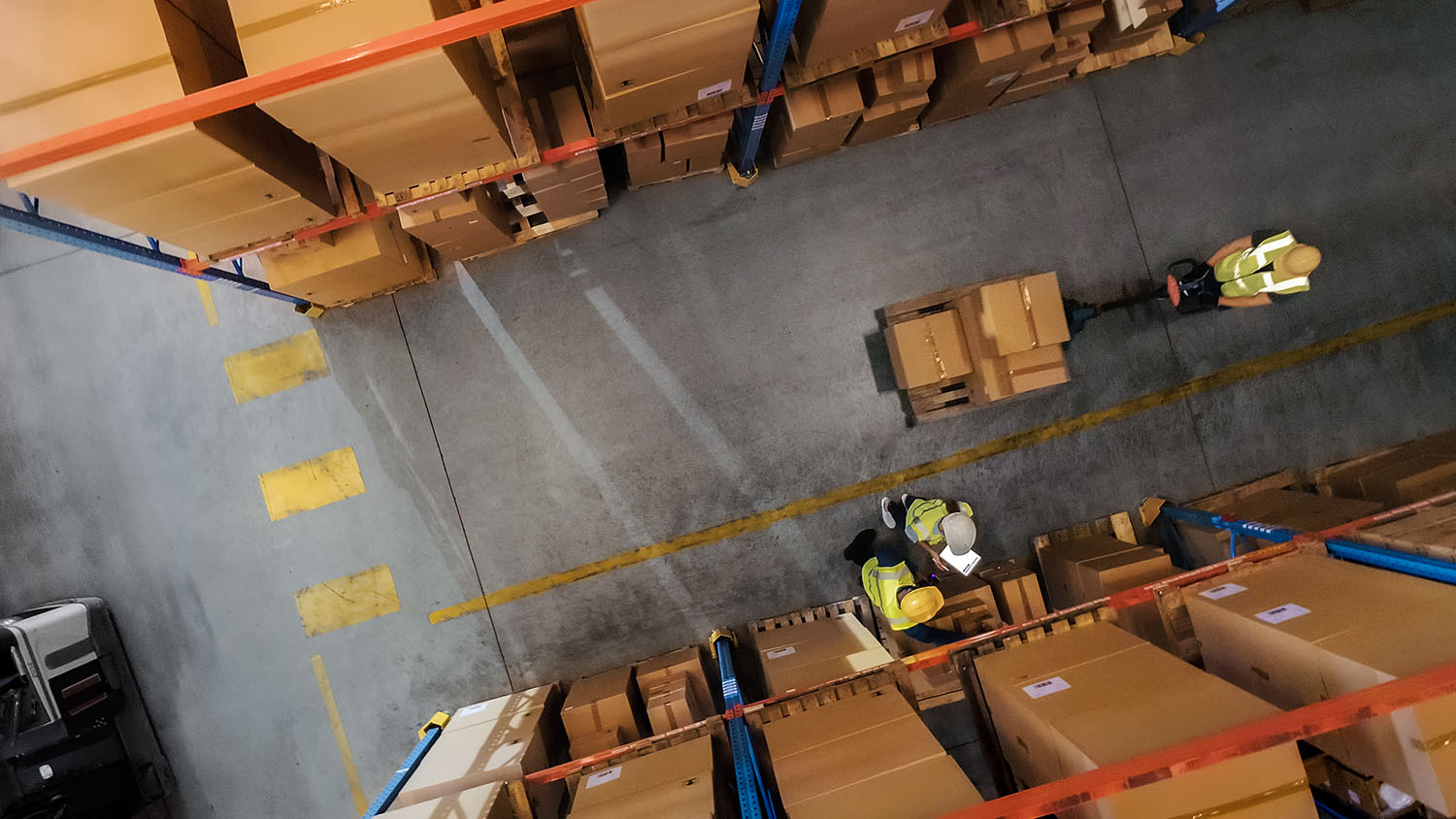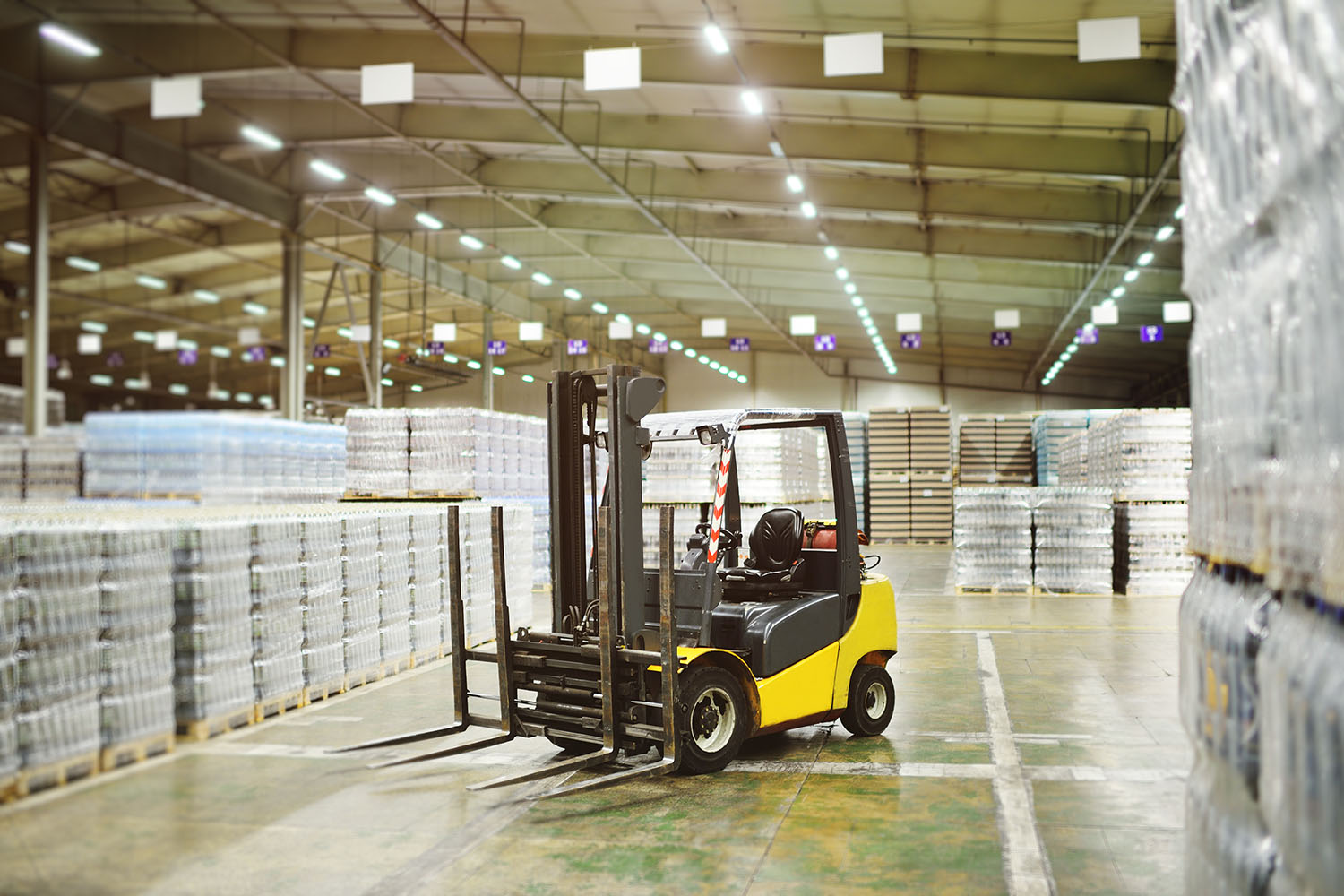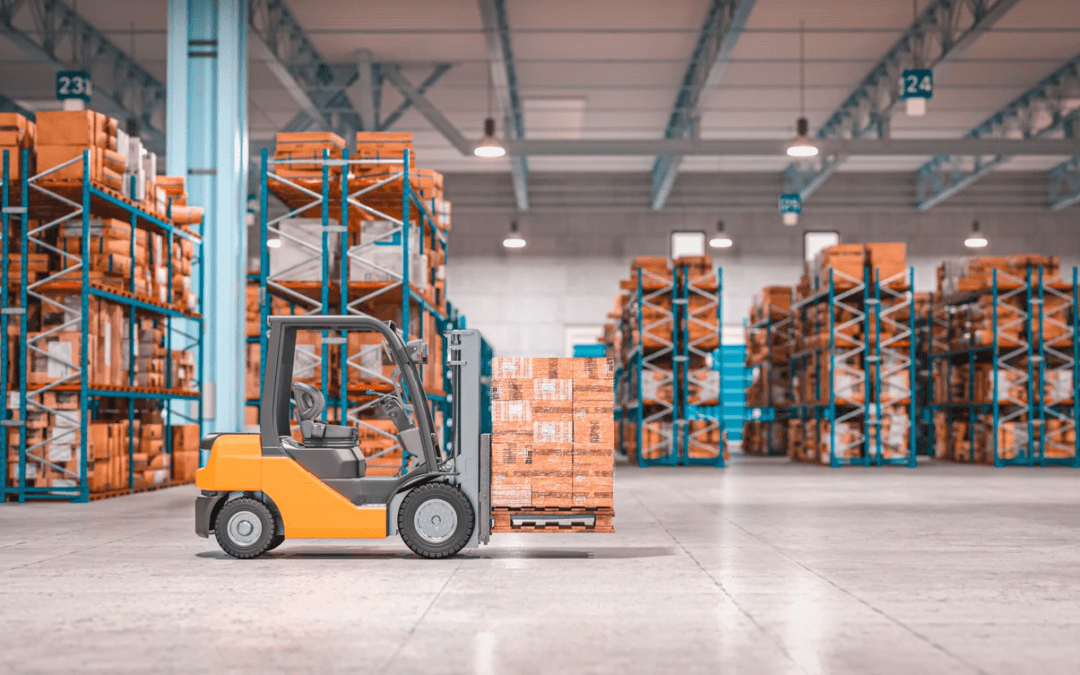When choosing logistics for your business, it’s easy to confuse 3PLs (third-party logistics providers) and 4PLs. 3PLs only handle logistics, from storing to packing and shipping, while 4PLs oversee the entire supply chain.
3PLs are focused on handling a warehouse’s operations. Meanwhile, 4PLs take a holistic approach, usually with larger enterprises, to coordinate multiple 3PL providers and manage multi-vendor, multi-warehouse supply chains.
Since both provide warehouse management services, how do you know which one’s right for you?
In this article, we’ll highlight key differences between 3PL and 4PL logistics and their benefits.
How Does 3PL Work?
3PL logistics executes orders on your company’s behalf. Inside the walls of their own warehouse, hey store goods in an organized manner, manage inventory stock levels, prioritize orders, accurately pick items, pack them, and ship them directly to your customers.
If your business has multiple SKUs (stock-keeping units) and a high volume of orders, a 3PL takes care of the warehousing side, freeing you up to focus on business growth.
According to a 2024 survey report, the average 3PL serves businesses across four industries, with retail (59% of 3PLs have retail customers), bulk goods (51%), and dry storage (52%) being the most common sectors.
Here’s a step-by-step example of how it works:
- Receiving Goods and Storage: The 3PL receives products from your supplier. They organize and store the goods using automated 3PL WMS software so items are easy to locate and retrieve.
- Order Processing: When a customer orders through your website or e-commerce store, the 3PL receives the order and groups items by batch or priority.
- Order Picking and Packing: The workers review order lists, pick each item accurately, sort them by individual orders, and send them further for packaging and shipping.
- Shipping and Delivery: The 3PL coordinates with shipping carriers to dispatch orders and sends tracking numbers to end customers.
4PL providers go beyond logistics; they act as your full-service supply chain managers. They manage your entire supply chain, coordinate with multiple 3PL providers, track order fulfillment rates, troubleshoot risks, and suggest scalable solutions to help increase customer satisfaction and operational productivity.
How Does 4PL Work?
Large enterprises often employ 4PL logistics to manage complex supply chain processes involving multiple warehouses, vendors, and partners.
The 4PL provider, consisting of industry experts, sits with your team to discuss supply chain needs, revenue goals, and current warehouse challenges, then decide how to proceed
They evaluate your 3PL providers, identify financial and operational risks, and develop a comprehensive plan to optimize your supply chain operations.
Additionally, the expert team coordinates with and often manages all providers, shipping carriers, and vendors; negotiates pricing and service-level agreements; and tracks supply chain KPIs for your company.
What are the Differences Between 3PL and 4PL Logistics?
3PLand 4PL differ in their role in supply chain management: ne 3PL refers to only specific logistics operations, 4PL to overseeing the entire process, including 3PL.
3PL providers act as a third party between producer and receiver by providing logistics solutions to companies including:
- Warehousing
- Transportation
- Cross-docking (shipping products directly from inbound shipments to outbound trucks)
- Packaging
- Inventory management
- Kitting (pairing items into a bundle or kit and packaging them together for shipping)
- Labeling and Shipping
For example, if you’re producing a wide range of skincare products, the 3PL provider will store, package, and deliver those products on your behalf to your customers. They take away the stress of stocking up goods and managing a huge volume of orders, so you can focus on sales, marketing, or production.
4PL takes it a step further by communicating with all 3PL providers on your behalf. If you have four 3PL providers, all in different regions, the 4PL provider will design a strategic management plan to work with subject matter experts (SMEs) in your key industry. 4PLs would also look into the 3PL providers’ performance, order fulfillment rates, and your business goals to improve performance across all warehouses.
4PLs track your company’s real-time inventory levels, demand, supply, transportation, shipping carriers, and other operations to ensure everything aligns with your brand and objectives.
Here’s a comprehensive table on the key differences between 3PL and 4PL:
| Service | 3PL Logistics | 4PL Logistics |
| Supply Chain Role | Handles specific logistics such as warehousing, order fulfillment, etc. for you | Manages multiple 3PL providers and other partners for you |
| Delivery to Customers | Ensures your customers get delivery on time | Monitors all end-to-end supply chain operations; from planning to execution |
| Inventory Management | Store your products strategically and give real-time updates on stock levels | Analyze inventory to avoid overstocking or stockout risks across all warehouses |
| Advanced Systems | Use advanced systems to complete orders on time | Use advanced systems to analyze real-time performance and productivity |
| Business Relationship | Have a transactional relationship | Work as a long-term partner with scalable access to various networks |
| Primary Focus | Focus on the physical movement of goods | Focus on strategic planning and management of your supply chain process |
| Process Optimization | Optimizes order collecting, picking paths, and sorting for faster delivery | Align your business goals with the supply chain operations |
| Transportation | Package and ship directly to customers | Work with shipping carriers for timely deliveries |
| Reporting Priority | Prioritize real-time updates on orders | Prioritizes transparency across all 3PL providers and partners |
| Communication | Two or more points of contact | Single point of contact |
How Do 3PL and 4PL Work Together?
Here’s an example of how 3PL and 4PL work together:
Imagine you’re a company that sells hand tools. Your 3PL provider will be responsible for moving your tools from the manufacturer to end customers. They will store your products, package them, and ship them by individual orders to your customers.
A 4PL provider will monitor the complete supply chain process. If there’s a sudden increase in demand, your 4PL provider might coordinate with your manufacturer to produce more tools. Or, if customers complain about late deliveries, the 4PL would work with the shipping carrier to deliver orders on time.
Benefits of 3PL Logistics
Here are some of the benefits of third-party logistics providers:
- Accurate Inventory Storage: These warehouses use advanced 3PL software to organize your product’s storage with real-time tracking so your customers get accurate orders.
- Organized Logistics Process: 3PLs have organized logistics operations from receiving goods to picking each item, sorting them into individual orders, and labeling them for timely shipping.
- Trained workforce: 3PL providers have trained workforce or employ smart robotics systems to store and ship sensitive products or perishable goods without damaging them.
- Timely Delivery: 3PLs use automated tools for inventory tracking and easy item storage/retrieval for on-time delivery, especially during peak seasons.
- Manage Logistics on Your Behalf: 3PL handles logistics for you so you can focus on scaling your business.
3PL Logistics Examples
Here are some examples of how companies use 3PL providers for order fulfillment:
Fulfillment by Amazon (FBA)
Amazon allows sellers to send their products to Amazon’s warehouses where they handle storage, picking, packing, shipping, and returns. When customers order anything on Amazon, the warehouse checks its storage, groups items for the order, packages them, and sends them directly to the customer.
HelloFresh
HelloFresh is a meal kit delivery service that employs a 3PL provider to handle their perishable items. The 3PL stores ingredients in weather-conditioned areas. When customers place an order, the ingredients are pre-portioned, packaged, and shipped directly to households.
Blue Bottle Coffee
Blue Bottle Coffee relies on a 3PL provider to handle subscription box fulfillment. The 3PL stores their coffee beans, handles kitting by bundling items into subscription boxes, packages the orders, and sends them out for timely delivery to customers.
Benefits of 4PL Logistics
Here’s why companies use 4PL logistics for their supply chain management:
- Single Point of Contact: 4PL providers coordinate with all partners to convey and receive real-time updates on the supply chain process. The company only contacts 4PL providers, instead of contacting each warehouse individually.
- Expert Advice on Supply Chain: 4PL providers have specialized professionals with years of industry experience who evaluate your supply chain for strategic planning, management, and execution across all 3PL providers and vendors.
- End-to-End Transparency: They use real-time tracking tools to oversee the entire supply chain ecosystem to resolve or prevent operational risks, shipping delays, or inventory inaccuracies.
- Cost Effective: 4PLs save costs by providing scalable solutions to avoid inventory waste/overproduction, financial losses, or expensive shipping charges.
- Network Access: 4PLs usually have a wide network of 3PL providers, vendors, and shipping carriers so your company can expand your brand without worrying about logistics operations.
4PL Logistics Examples
Here are some examples of how world-famous enterprises use 4PL logistics:
Nike
Nike has a 4PL provider that oversees the sourcing, production, and logistics of their products. The provider manages their complex supply chain ecosystem, especially during peak sales seasons or product launches to ensure timely delivery to over 1,045 retail stores worldwide and online customers.
Tesco
Tesco has a 4PL partner that manages warehousing, transportation, and suppliers for its groceries and retail products. The provider acts as a single point of contact. They coordinate with multiple warehouses and suppliers while helping the company meet sustainability demands on reducing carbon emissions and waste.
WeCare
WeCare, a global pharmaceutical company, relies on 4PL provider to manage their inbound flows to outbound logistics. The partner provides active shipment monitoring, capacity planning, regulatory compliance, and exception handling. The company also employed life science-certified professionals to plan the safe transport of their products by ocean and air freight.
3PL vs. 4PL: Which One’s Best For Your Business
Choosing between 3PL and 4PL depends on various factors in your supply chain processes:
- Business Size: 3PL suits small to midsize companies that need simple solutions for order fulfillment and storage. 4PL is suitable for large enterprises with multiple warehouses, partners, and suppliers worldwide.
- Order Volume: 3PL providers can manage both moderate and high order volumes, but enterprises will need 4PL to handle their complex logistics involving multiple 3PLs or regions.
- Control: If you want more control over your logistics operations, 3PL may be a better option. But you will need a cloud-based WMS software for real-time reporting updates. 4PL takes full control over your supply chain processes so you can focus on other business areas.
- Budget: 3PL is more cost-effective if you only need logistics services, 4PL is comparatively expensive but offers greater value for complex, global supply chains.
- Scalability: 3PL ensures timely order delivery to help grow your customer base and build loyalty, while 4PL provides scalable solutions to optimize supply chains and help you expand your business globally.
The Verdict: If you have many SKUs and high order volumes, 3PL logistics is for you. But if you need to manage multiple warehouses or plan on expanding your business abroad, 4PL providers are the best option for you.
How Da Vinci’s WMS Software Helps
Da Vinci’s warehouse management system (WMS) offers cloud-based solutions to 3PL providers who need to execute their critical links in the supply chain. Our EDI (Electronic Data Interchange) features standardized data communications so you can share real-time workflows with your clients and suppliers.
Our software systems allow you to set pre-defined rules for different customer accounts, using proven algorithms to optimize your storage area, track inventory levels, improve picking accuracy, and ensure timely order fulfillment.
Da Vinci’s 3PL WMS also offers third-party and custom integrations to help you scale your business across multiple platforms.
Additionally, our tools like labor management systems, automated 3PL billing, and custom document creation (e.g., invoices and shipping labels) further simplify your warehouse operations.
Book a demo with us to learn how you can improve your 3PL logistics by integrating Da Vinci’s WMS software.
FAQs
What is the difference between 3PL, 4PL and 5PL?
3PL provides specific logistics operations like warehousing, packaging, or order fulfillment to your end customers. 4PL strategizes your entire supply chain by coordinating with multiple 3PL providers, partners, and suppliers. 5PL providers coordinate and manage multiple supply chains using advanced technologies, automation, and software to improve logistics operations.
What is the difference between 4PL and LLP?
4PL (fourth-party logistics) strategizes and coordinates your company’s supply chain while LLP (Lead Logistics Provider) is a type of 4PL that only oversees multiple 3PL providers to improve logistics operations.
What’s the difference between 1PL, 2PL, 3PL, 4PL, and 5PL logistics?
1PL logistics is when you store and ship items directly to your customers. In 2PL logistics, you manage your storage but outsource a shipping carrier for deliveries. 3PL providers handle your logistics; from storage to shipping to your end customers. 4PL analyzes and strategizes your entire supply chain process with multiple suppliers and vendors. 5PL coordinates and manages multiple global supply chains.



